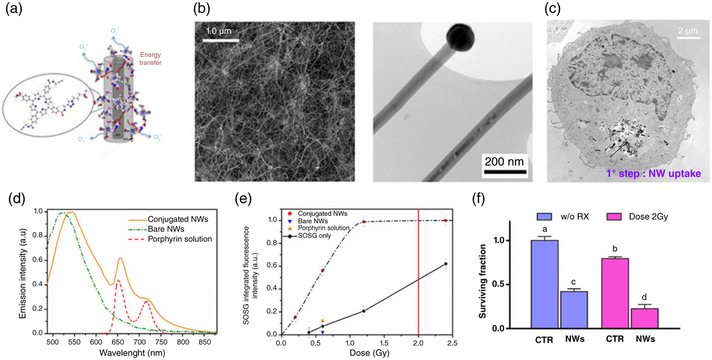FIGURE 3.
Silica nanowire based X-PDT. (a) Schematic of the SiC/SiOx/H2TPACPP system. Grown nanowires are functionalized with azide groups; the H2TCPP porphyrin derivative containing an alkyne group (H2TPACPP) is synthesized by converting the carboxy groups into N-propynylamides; the nanohybrid is constructed by bonding H2TPACPP to the NWs. (b) Left: SEM image of the as-grown nanowire network on Si substrate. Right: TEM image of two neighbor nanowires. (c) TEM of cellular uptake and internalization of the nanowires during the first 24 hr. (d) Fluorescence spectra acquired at room temperature over as-grown nanowires. (e) 1O2 generated, as a function of the radiation dose. (f) Histogram of clongenic survival assay. (Reprinted with permission from Rossi et al. (2015). Copyright 2015 Nature Publishing Group)

